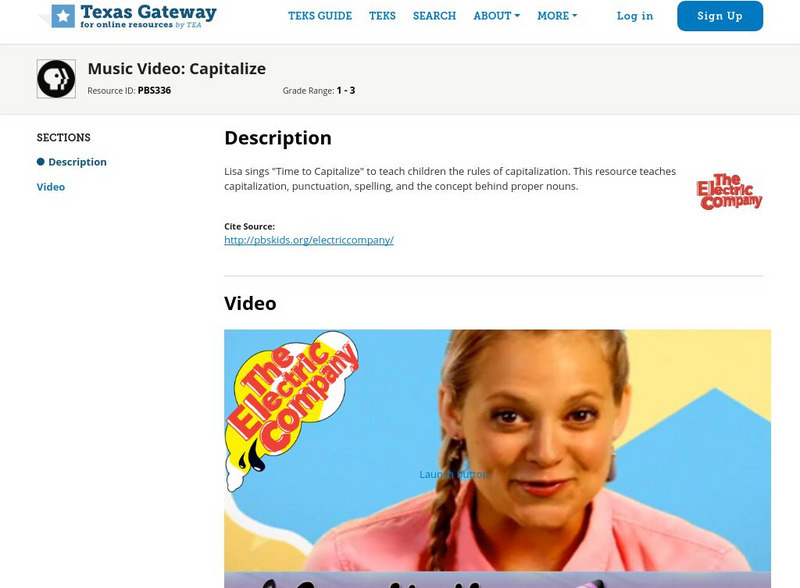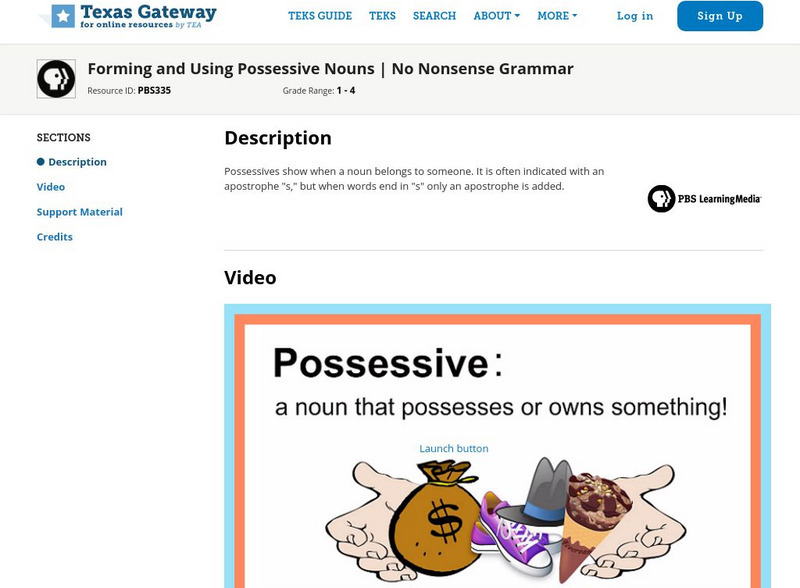Hi, what do you want to do?
Scratch Garden
The Sentence Song ♫♪♫ | Scratch Garden
A laid back beat and silly animation makes a music video about sentence structure a hit among young learners. Find out what a capital letter is and when we use them, as well as end punctuation; the period, exclamation point, and question...
Turtle Diary
Turtle Diary: Capitalize Days, Months, Holidays, Seasons, and Directions
This three-minute video focuses on the rules for capitalizing particular types of proper nouns, especially days of the week, months, holidays, seasons, and directions.
Turtle Diary
Turtle Diary: Collective Nouns
This video presents a thorough explanation of collective nouns, including what they are and how they are usually structured in a sentence. Plenty of examples support learning this concept.
Turtle Diary
Turtle Diary: Proper Noun
This TurtleDiary interactive video lesson features information about proper nouns. Rules related to proper nouns and the application of capitalization rules are included. Games and worksheets are provided to supplement this proper nouns...
Turtle Diary
Turtle Diary: Singular & Plural Nouns
This TurtleDiary video lesson [11:03] is designed for students to explore singular and plural nouns. Practice exercises, a video, and a lesson are included to supplement this singular and plural nouns lesson.
Texas Education Agency
Texas Gateway: How to Use the Correct Capitalization: No Nonsense Grammar
Capitalizing is extremely important. Not only is it proper writing, but it also makes writing look polished and finished. Learn what should be capitalized and what shouldn't in this video.
Texas Education Agency
Texas Gateway: The Electric Company: Music Video: Capitalize
Lisa sings "Time to Capitalize" to teach children the rules of capitalization. This resource teaches capitalization, punctuation, spelling, and the concept behind proper nouns.
Texas Education Agency
Texas Gateway: Forming and Using Possessive Nouns: No Nonsense Grammar
This video focuses on forming and using possessive nouns; they show when a noun belongs to someone. It is often indicated with an apostrophe "s," but when words end in "s" only an apostrophe is added.









